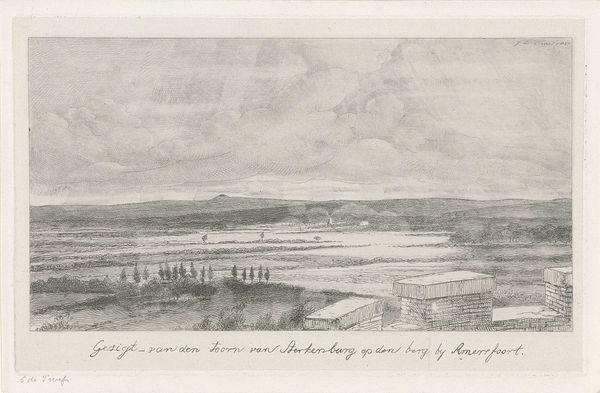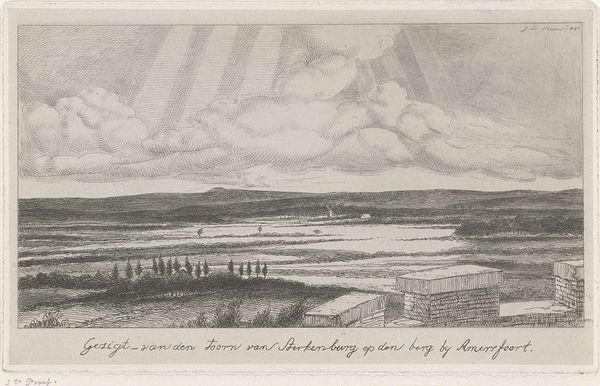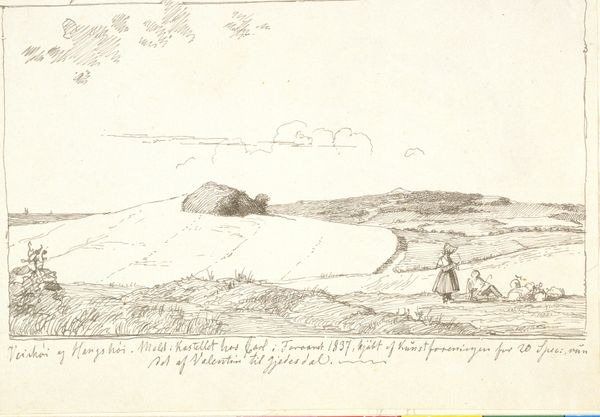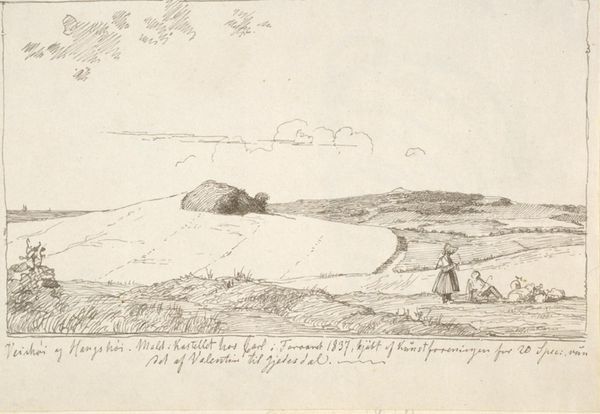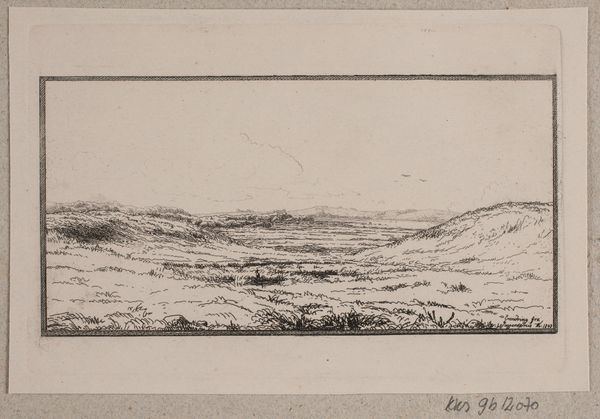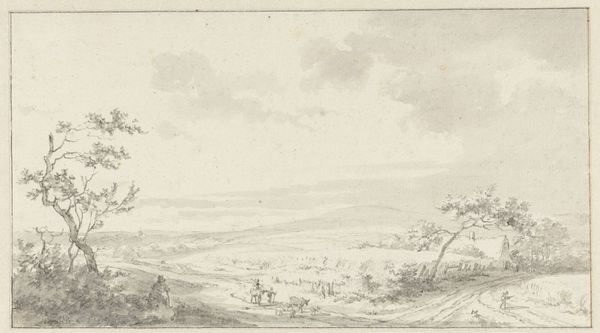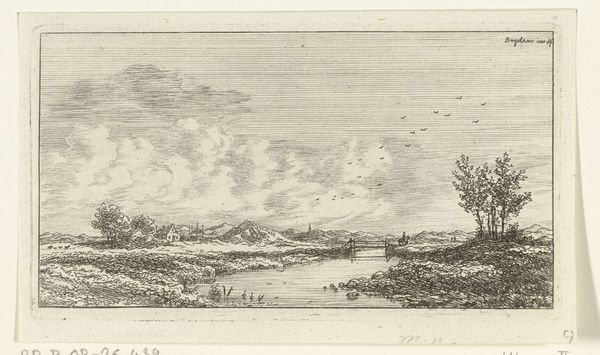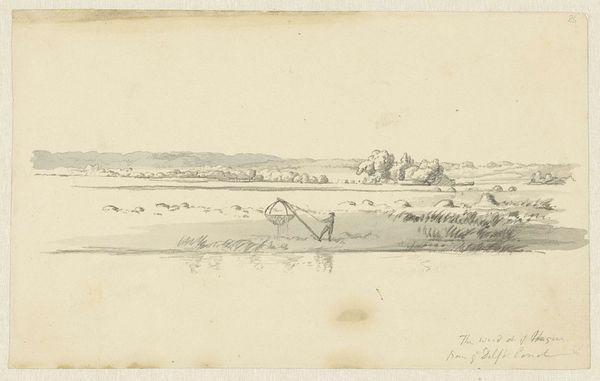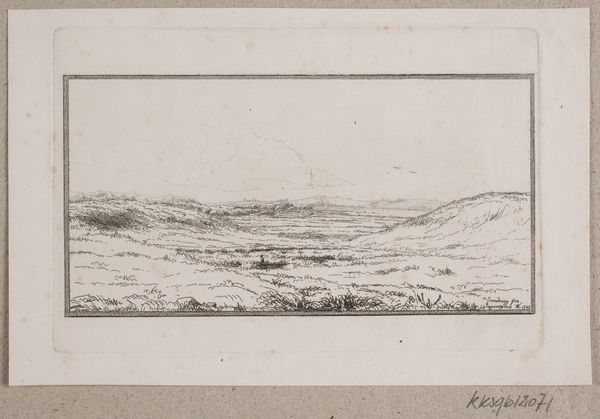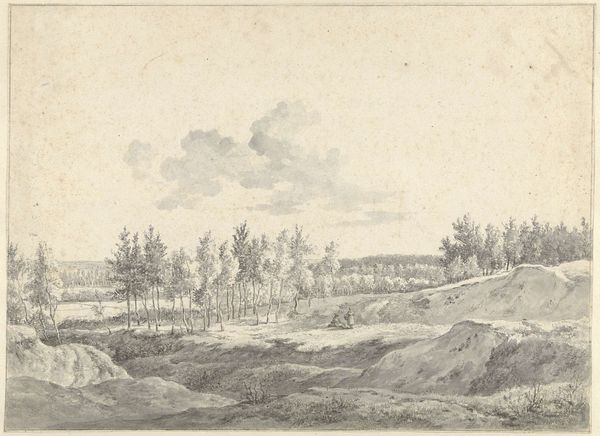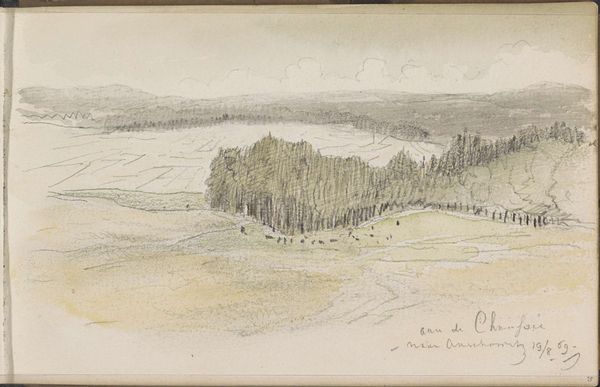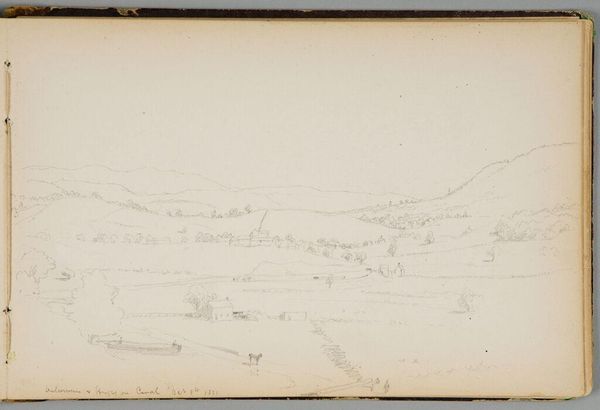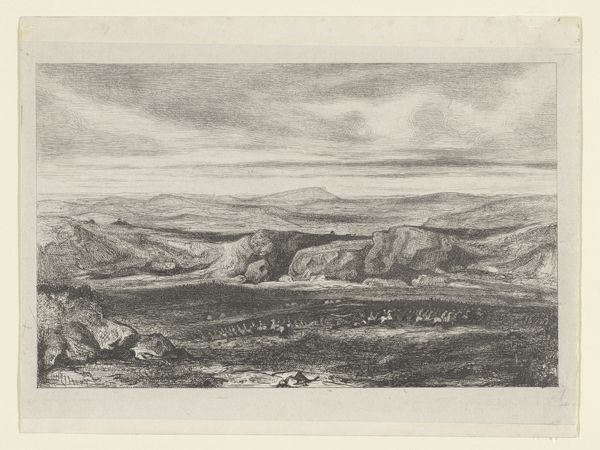
drawing, print, etching, paper, pencil
#
drawing
# print
#
etching
#
landscape
#
river
#
paper
#
pencil
Dimensions: height 155 mm, width 248 mm
Copyright: Rijks Museum: Open Domain
Editor: So, here we have Jacobus Ludovicus Cornet's "Landschap rond Amersfoort" from 1851. It's an etching, very detailed, but rendered in soft grays and whites. It feels quite serene, almost nostalgic. What do you see in this piece? Curator: Beyond the placid surface, I perceive layers of cultural memory embedded in the landscape itself. Look at the composition; the etching almost divides the landscape into zones. Consider what each contains; civilization rendered by trees and building, and nature with rolling hills and bodies of water, with that river snaking its way through, a classic symbol for life's journey. Do you see how the church spire on the horizon acts as a marker, almost like a visual anchor? Editor: Yes, I see it now! It provides a focal point, despite its size, amidst all that openness. Is it unusual to find such symbolism in what seems like a straightforward landscape? Curator: Not at all. These serene landscapes often functioned as more than mere representations; they acted as affirmations of cultural identity, heritage, and perhaps even longing. Notice how the etching technique itself, with its delicate lines, evokes a sense of gentle history, like memories fading and reforming. It whispers of simpler times. What does that imagery mean to people over time? Editor: I never thought about it that way, seeing beyond just the pretty scenery. It is about memory, a physical record of a place. Thanks so much! Curator: Indeed, the power of landscape lies in its capacity to mirror our own inner landscapes and remind us about our connections to heritage. Thank you.
Comments
No comments
Be the first to comment and join the conversation on the ultimate creative platform.
